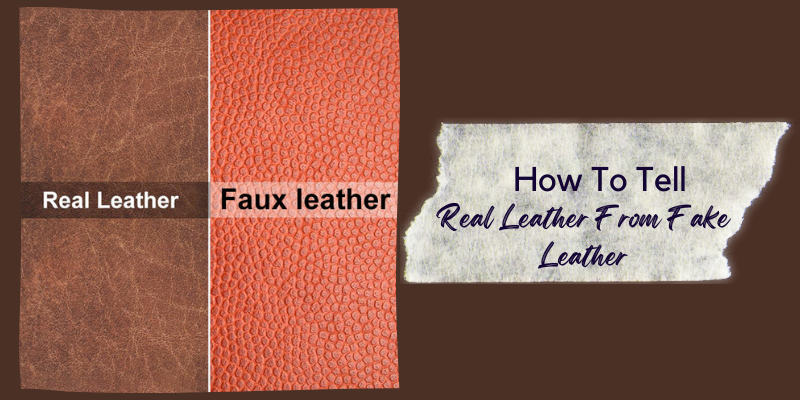How To Tell Real Leather From Fake Leather
Identifying genuine leather from faux can sometimes feel like a monumental task, especially if you’re not sure what to look for. But don’t worry! We’re here to guide you through this leather-determining journey. From the texture to the smell, we’ll clarify the key differences and assist you in becoming an expert in no time.
Real leather is a natural product that has a distinct look, smell, and feel that synthetic materials can’t fully replicate. But knowing how to discern that can be the challenge.
Before we dive in, let’s take a look at some quick differences:
- Texture: Real leather has an irregular pattern, while faux leather has an artificially consistent pattern.
- Smell: Real leather has a distinct, often pleasing smell that fake leather lacks.
- Edge: The edges of real leather tend to fray naturally while those of faux leather are perfect.
- Price: Real leather is generally more expensive than fake leather due to its durability and quality.
So, now that you know what to look for in a nutshell, let’s delve deeper into each Now that you’ve got a basic understanding of what real leather characteristic to help you capture these differences in flesh (or should we say, in leather?).
Understanding the Basics: What is Real Leather and What is Fake Leather?
Okay, now that we’ve established the difference between real and fake leather, let’s dive into some practical ways to distinguish between the two. Following these simple and effective methods, you will become a pro in no time at all.
The Texture Test
First things first, touch the leather. Unlike its synthetic counterparts, real leather should feel dry to the touch, not slick or plasticky. It generally has an inconsistent, natural texture with small imperfections, while fake leather tends to be more uniform.
The Smell Test
Next up, we have the smell test. Real leather has a distinct smell mixed with natural and aromatic scents that synthetic alternatives cannot quite replicate. So trust your nose. If it smells like plastic or chemicals, chances are it’s not real leather.
The Fire Test
Then there’s the definitive fire test – but please proceed with caution! Only perform this test as last resort. Poke a hidden area of the leather item with a hot needle. Genuine leather won’t catch fire easily, while synthetic materials will melt or shrivel at the touch of heat. Keep use it judiciously. in mind that this test can potentially ruin your item, so
The Waterorption Test Another> reliable is test the absorptionwater test. Drop a tiny amount of water onto the surface – real leather will absorb a small amount of water, while fake leather will simply repel it.
Just be aware that none of these tests are infallible. Sometimes, the best way to ensure you’re getting real leather is to buy from a reputable seller. However, understanding these basic tests can go a long way in ensuring your peace of mind.







